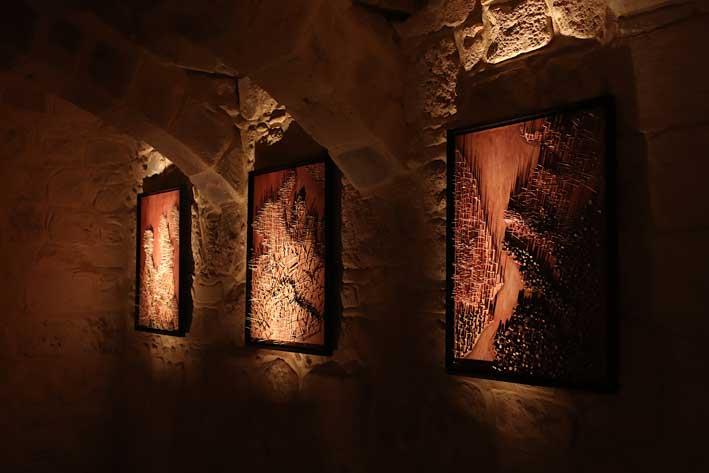Print-making in all its varied forms is not one of the more popular art forms nowadays. It requires the re-capturing of old methods and their related craftsmanship, a strong technical mastery, great patience, inventiveness and a hefty dose of courage to go against the grain. And one cannot approach print-making in a slapdash fashion, because there are rules which govern the process from start to finish.
Stopping by the studio cum workshop of artist, teacher and curator Roderick Camilleri, provides an eye-opening experience of what being a modern day print-maker is all about. From woodcuts to etchings, aquatints, monotypes, lithographs and more, Roderick has tried most variants in ample detail. And there is definitely nothing slapdash about the way his artworks come to be.

As a dynamically charged artist, he is constantly in search of the next new creative challenge, whatever the medium, whatever the genre. His dedication to art kicked off quite early on. A childhood fancy for doodling and drawing encouraged his parents to enroll him in art classes early on, and that set the ball rolling for his first exhibition of works - a still life and a pastoral scene, shown at his local church when he was just 11 years old. Eventually he studied technical drawing and was tempted to delve in the history of art. His Master in Philosophy led him to research aesthetics and art criticism.
Along the way, he was inspired or tutored by the likes of Harry Alden, Lino Borg and Eman Grima, among others. "Seasoned artists and tutors such as these inspired me immensely. Alden was especially interested in my initial experiments in art and I have fond memories of his words of advice, and of the time spent with him, listening to his reminiscences of his own days as a student of Emvin Cremona."
Being a stickler for detail, Roderick is never content with simply skimming over a new technique, but goes to extra lengths to become deft at it. He travels when possible, to further his expertise. "England entices me for the possibilities of learning so much about print-making and it is a country where one can source the rarest of materials and the finest of tools to work with. I have trained at the Royal Academy of Arts and the Slade School of Fine Art, then again I attended expertly led workshops in Belfast, Rome and even Morocco. One of the most fascinating courses was about the use of non-toxic lithograph processes, so not all training is about technique or creativity. Print-making involves a lot of technicalities and material aspects. Many of these really entice me - the ink, the line, the press, the sharpening of tools, the preparation of the copper plates... The process is meticulous and could be tedious if one is not especially passionate about it. It begins with a vision and then the procedure leads me on, often not knowing what the exact outcome will look like. There is a strong element of surprise in the outcome."

But his creativity does not stop at print-making. Indeed Roderick has had ample experience with other art forms, from installations to mixed media to paint. Most recently he participated in Regaining a Paradise Lost - The Role of the Arts, this year's edition of the APS Mdina Cathedral Contemporary Art Biennale, which had to transfer online due to the pandemic. For this exhibition, and in keeping with the selected theme, he tried his hand at a novel concept, using acacia tree thorns on canvas. "The tree's thorns are reputed to have been used for Christ's crown of thorns. I was inspired to use them (all very carefully handpicked from local trees) to create a series of works based on the topography of our more important harbour areas, and represent man's torture of our natural ambience."
Then there have been other collectives both in Malta and abroad, in which he exhibited with success, such as Divergent Thinkers, Vittoriosa (2016); Imprint IV, Valletta (2019) and Ognuno giochi la sua carta, Naples (2019). Apart from teaching art topics at the School of Art, he makes time to assist other artists with his curatorial skills. Key exhibitions he recently curated include, for instance, AMuSE, a series of collectives held in Italy, The Netherlands, Lithuania and Malta (2018-2019). There was also Imprint III collective held in Valletta (2017). The list goes on, surprisingly for one so young.
Yet, although Camilleri has invested much effort to help other artists set up their public solos or to organise exceptional collectives, he is still biding his time to have his own first solo show. Presently this is earmarked to be held in Valletta later this year, an exhibition which will showcase his most recent experiments in print-making and perhaps more. Will it provide surprising novelties? Knowing Roderick, it most certainly shall.